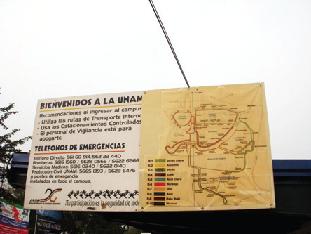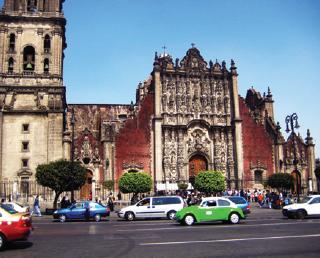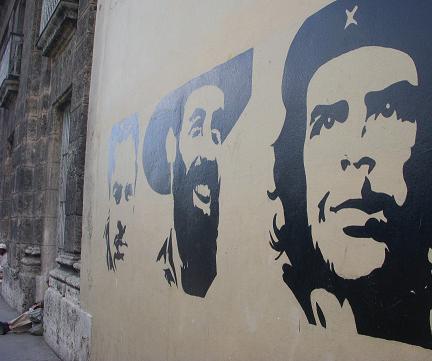

Many people have once imagined what it is like to go to the festive world, South America . Fortunately, Sookmyung Global Project 2008 offered Sookmyungians the chance to quench their curiosity about it. There have been global projects in Sookmyung every year, but this time, with its new formation, Sookmyungians applied for one region out of eight to which they wanted to go and do research on. Three teams including my team were given a chance to go to South America and a professor from the Division of Culture and Tourism, Kim Saejune, accompanied us. At first, three teams gathered with different plans involving different countries, as South America itself is a very large continent, so we launched into giving a shape to our plans.
-How Did You Select ‘ South America? ’
When asked what made us apply for this project, the answers of the group members were quite obvious, sharing some points in common.
“I wanted to feel something different.” (Kim Jisook, Public Relations & Advertising, 05’)
“I’m waiting to join the festival everyone enjoys and discover the art they love” (Bae Myungsook, Multimedia Science, 05’)
“In the passionate continent with the sound of drums everywhere, I wanted to feel my heart throbbing with it.” (Park Hana, English Language and Literature, 07’)
“Since South America is known to be very different from other continents, I was sure that it has something special in it.” (Kim Yooyoung, French Language and Literature, 05’)
South America sounds somewhat unclear to many people. The thing most of our members shared was a desire to see the differences beyond the rare information found on the Internet.
-Getting Closer
There was a pre-orientation for Global Project 2008 in November, held by the Office of International Affairs. It was a good chance to specify what to do, listen to other groups’ plans and refer to them. Especially, when we had to draw a flag of the country we visited, rather than drawing either or , we drew the flag of as a base, and then put the face of Che Guevara who is known for his involvement in the revolution in . Also, our group members had an official meeting for some time and shared information they had heard. The rate of criminal arrests in , almost as low as 0%, was so shocking at that time that it still remains in my memory.
Above all, however, the most important point was to study and to learn as much as we could about those countries. But the common difficulty every member faced was the sparse information available both on the Internet and in books. Most of the web pages we had planned to visit were only written in Spanish but as we had to email the organizations to ask for interviews, we just guessed the Spanish words according to similar ones in English. It was very frustrating, however, that there was no reply for any email we sent with hope. I learned later that especially in , the Internet is hardly accessible except to some organizations including universities controlled by the government and it is even restricted by the Also, to supplement the little information we had, the professor suggested we read as many books and watch as many movies as possible to get familiar with such unknown and faraway countries. Watching the Cuban movie ‘Buena Vista Social Club,’ gave me an image of my destination.

-As it is, Make it Synergic
In Mexico, most of the historical relics were preserved as they are. Templo Mayor - one of the main temples of the Aztecs in their capital city of Tenochtitlan and now in Mexico City – was located in central Mexico City so that everyone who passes around it can see the great historical spot. The museums were displaying excavations right beside the spot, and overall Mexico City was harmonized with relics of antiquity.
We felt the same at Universidad Nacional Autonoma de Mexico (UNAM) – The National Autonomous University of Mexico. Compared to subway stations in which are named after each specific university, it was weird for me to call the station by its general name – “university.” But considering its scale, it was a plausible enough name. UNAM consists of hundreds of buildings and was almost as broad as a city.
Before arriving, we had totally failed in contacting anyone at the university through email, so all we could do was just ask for a guerrilla interview on the street. Fortunately, we met Renato Huarte Cuellar, a professor teaching philosophy who has also been to Seoul for an academic conference. He knew about the university system in although not in depth, but we could refer to his short visit to . As far as he knew, compared to , in there’s a stronger bond between professors and students, without strict division. This means they do research and many activities together, and each professor plays an important role in sharing their knowledge, or as a mentor. He said, with a close relationship, both professors and students could build their knowledge together through a series of procedures.
According to Professor Renato Huarte Cuellar, their relationship was similar to what I felt all the time in , well-harmonized. I thought this was the reason why in spite of its scale as large as the Principality of Monaco located in Southern Europe , the university maintains its great reputation and bond and keeps developing.
-The Imagination of Utopia
During the colonial period of South America , ruled by Spanish conquerors, South America was one-sidedly known as the uncivilized world by the Spanish and Europeans. Even the philosopher Hegel viewed this continent as the “ without history”. This was changed when Oswald Spengler (1880 ~ 1936), a German historian and philosopher wrote a book, ‘The Decline of the West’ and many other artists who witnessed the terrible events of World War | expressed this in each of their works of art. The atmosphere they had once considered uncivilized became rather an ideal world, similar to Utopia. That’s why many Europeans still picture as Utopia. In fact, there are some Utopian factors in Cuban society, and for many, it is still a nostalgic place far away from the disgusting modernized western society.
-And the Contradiction - Inside Utopia
Visiting for just a few days, it is not hard to discover the influence of government in , which is derived from its political system –socialism. Without deeply studying political science, you can feel it by breathing with Cuban people. It was not a feeling that I could have imagined merely by reading books related to it. One of the surprising facts of is that the price of every single product is the same, so you can purchase the same item for the same price everywhere. That is the influence of the government. Also, for Cuban people, public welfare including medical treatment is offered for free, supported by the government. As you know, in addition to socialism which stands for fairness, was once depicted as a Utopia by Europeans.
However, such facts collected in my mind turned out to be no more than just a small part of the society. When visiting Universidad de La Habana – Havana University – we met a typical Cuban student named Alberto Kuyuk in Medical School . He was willing to do us a favor when introducing the university. However, as we launched into the interview, his face suddenly turned pale. We had wanted to compare the system of Sookmyung to that of Havana University , and to know the advantages and disadvantages of being a student there, but he answered that everything was fine and there was no disadvantage in being a Cuban student. He was also reluctant to answer the other questions. With short answers, it was impossible to know and compare in depth. I couldn’t understand his attitude well at that time, but it was no wonder in , considering the massive control exercised by the government, and there are many secret police everywhere, which makes people always careful about what they say.

-Lessons Not Written in Textbooks
The most difficult problem we faced during the research is that the reality was much different from what we had studied before. We took it as natural that in there would be many club activities outside of school, and wanted to know the details about them. But this wasn’t the case, and we were confused about what to ask, and we had to quickly modify the overall subject. It was the same for , as mentioned before.
Thinking back, the strong point of this project was the first-hand information which made this project priceless. As Mexican and Cuban people were unfamiliar to us, we were unfamiliar to them. That’s why they greeted us with big cheers everywhere we went. On the other hand, we had heard of the historical background of and the embargos caused by its history, but never imagined how it has influenced people and how they live. But during our stay in Havana , we got to know that the commodities we use everyday could sometimes be very precious for Cubans, and we spontaneously built up the habit to economize all the time. It was a very special experience in that I wouldn’t have felt anything close to those feelings if I had not been there in my life. Because of the embargo, it was remarkable to see a variety of transportation – classic cars, small taxis named coco taxis, and even horse-drawn carriages. The owners of any kind of machines are experts at fixing them when broken, as it is almost impossible for them to buy new ones. Can you believe that a camera made in 1910 still works, taking black-and-white pictures and leaving an unforgettable memory for many tourists?
Considering the purpose of our members, the project ended up as a success, leaving strong and unforgettable memories. Even though not every single interview and research activity went smoothly, it was all a part of the learning process. South America has been recognized as a place relatively inaccessible by distance, and so was the information. However, since our visit, we and the people around us now know that it may be far away, and takes almost two days to get there, but at least it’s reachable. That’s just the beginning of unveiling the unknown.
There was a piece of advice that the professor of our group suggested before leaving – there is a value earned by the individual, and another by the group. This was true. Personally, I was lucky to be a member of the project, but at the same time, I don’t think that I could have enjoyed the trip as much as I did if I had visited by myself. This project made me earn more than I could by myself. I hope you to grab the chance that is hard to experience elsewhere.


